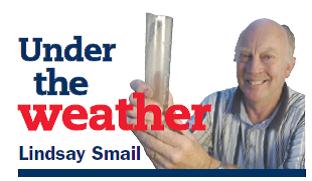Rainfall varied greatly across the region in July.
Some parts of central Geelong received only around 70 per cent of the normal rain for the month, while southern and western suburbs like Herne Hill, Belmont, Highton and Grovedale recorded above the 30-year average of 44mm.
Breakwater only measured 29.2mm and Inverleigh was just in the middle ‘teens.
However, the Otways catchment areas received well-above average. Mt Sabine, at the head of the catchment, recorded 245mm, although West Barwon Reservoir received less.
Barwon Water recorded the storages at 81.7 per cent capacity this week, about 10 per cent higher than the same time last year.
A new record was created early on the last day of the month with the warmest minimum ever for July, 13.8C. It occurred amid strong north-westerlies just in advance of an intensive cold front and an Antarctic blast.
The previous warmest July night was 12.9C in 1988.
Mild nights and cold days characterised July 2014.
Geelong’s daily minimums averaged 7.2C, which was 1.6C above the latest 30-year mean minimum. Maximums averaged 14C, almost identical to the 30-year mean daily maximum.
Overall, the month was .85C warmer than average, probably to the disbelief of many residents.
The lowest overnight minimum was .9C on July 22 and the warmest day was six days later with 18.4C, neither of which was a record.
My second edition of ‘Weather Wonders of Geelong will soon be available on geelongweatherservices.com.au. The colour photos by Peter Redmond and Phil Thomson as well as other local photographers look brilliant.
Waurn Ponds Library will host a book launch on 10 September, with registrations to attend available by phoning 5272 6010.
Get the latest news to your email inbox FREE!
REGISTER






